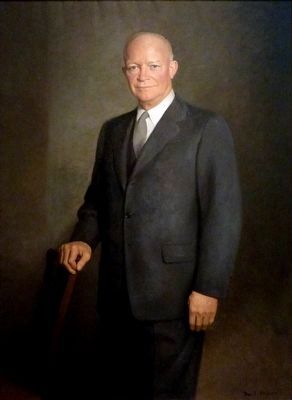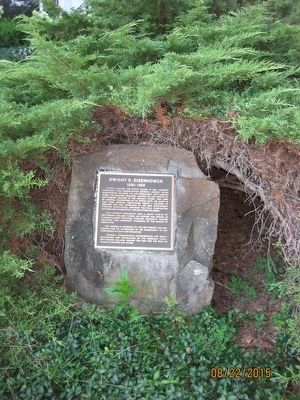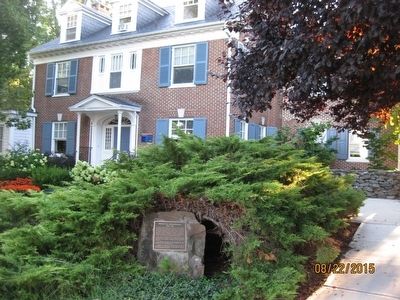Dwight D. Eisenhower
1890-1969
The former president was a good friend of Gettysburg College during his lifetime and served as commencement speaker, trustee, honorary degree recipient and honorary chairman of the Board of Associates.
The General's presence on the Gettysburg College campus was an affirmation of his commitment to and confidence in youth and education.
General Eisenhower's achievements are widely recognized and appreciated by the American public. Gettysburg college honors this man and the role he played in shaping our nation.
Topics and series. This historical marker is listed in these topic lists: Education • Government & Politics. In addition, it is included in the Former U.S. Presidents: #34 Dwight D. Eisenhower series list. A significant historical year for this entry is 1861.
Location. 39° 50.12′ N, 77° 13.886′
Other nearby markers. At least 8 other markers are within walking distance of this marker. The Office of a President (a few steps from this marker); President Abraham Lincoln Signing the Emancipation Proclamation (within shouting distance of this marker); Stevens Hall (within shouting distance of this marker); Captain James A. Thompson '40 (about 300 feet away, measured in a direct line); The Founding of Gettysburg College (about 300 feet away); Eddie Plank (1875-1926) (about 400 feet away); Battery K, First Ohio Light Artillery (about 600 feet away); Gettysburg College Rooted in History (about 600 feet away). Touch for a list and map of all markers in Gettysburg.

“In American politics, a successful military career has often led to the presidency, and so it proved with Dwight D. Eisenhower, who gained fame during World War II as supreme commander in Europe. Eisenhower was courted by both political parties, and he became the Republican nominee in 1952, chosen over the more conservative Robert Taft. Eisenhower defeated Illinois governor Adlai Stevenson in a campaign that attacked the Democrat's foreign policy savvy and toughness. With Eisenhower's personal appeal — the slogan was ‘I Like Ike’ — and military background, the Republican ticket was elected and then reelected in 1956. In office, Eisenhower ended the Korean War, maintained an uneasy balance with the Soviet bloc, and domestically presided over a period of general prosperity. A moderate conservative, he was cautious on issues of civil liberties and civil rights but left office warning of the growth of a ‘military industrial complex’ that threatened both government and American values. Once criticized as too passive a president, Eisenhower now draws widespread praise for his quiet, effective leadership during the 1950s.” — National Portrait Gallery
Credits. This page was last revised on June 16, 2016. It was originally submitted on August 31, 2015, by Bill Donovan of Maplewood, New Jersey. This page has been viewed 470 times since then and 22 times this year. Photos: 1, 2. submitted on August 31, 2015, by Bill Donovan of Maplewood, New Jersey. 3. submitted on September 1, 2015, by Allen C. Browne of Silver Spring, Maryland. • Bill Pfingsten was the editor who published this page.

